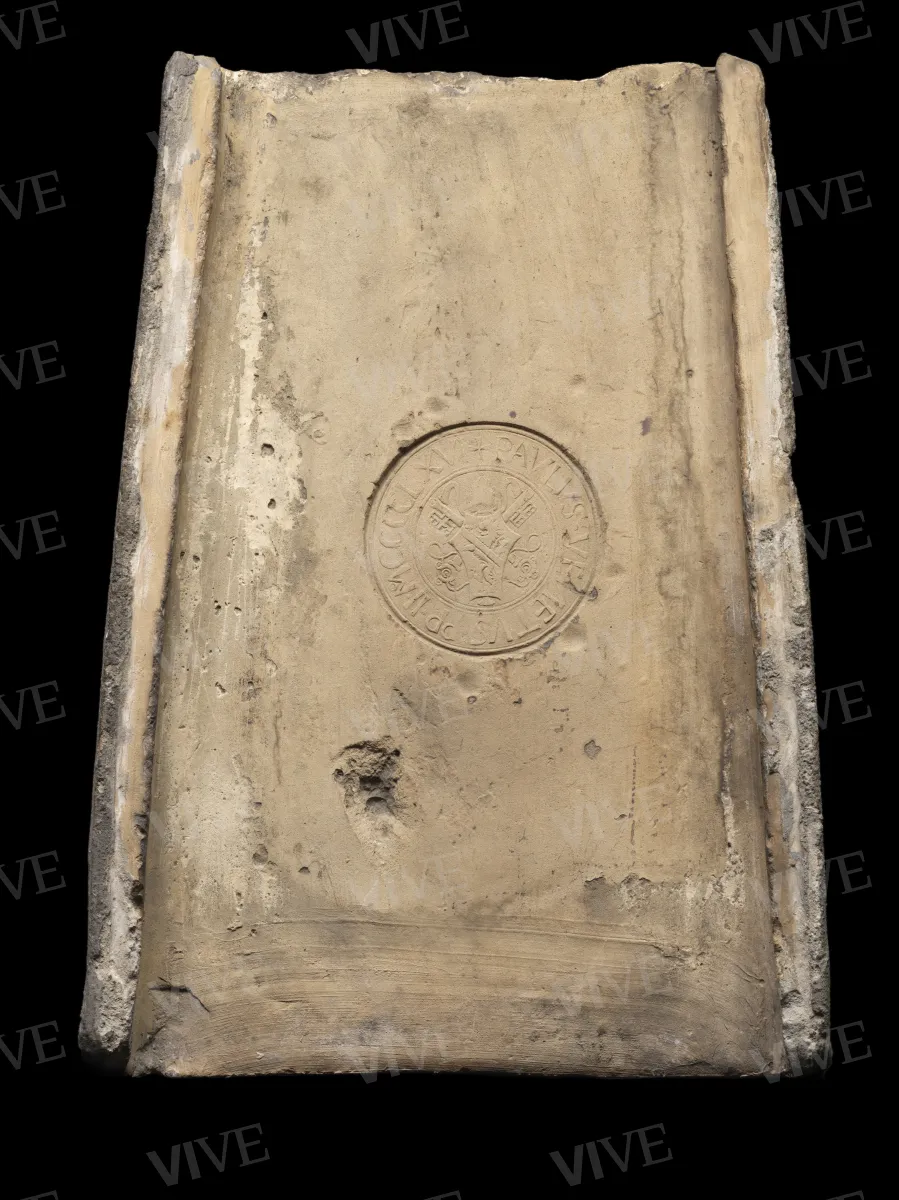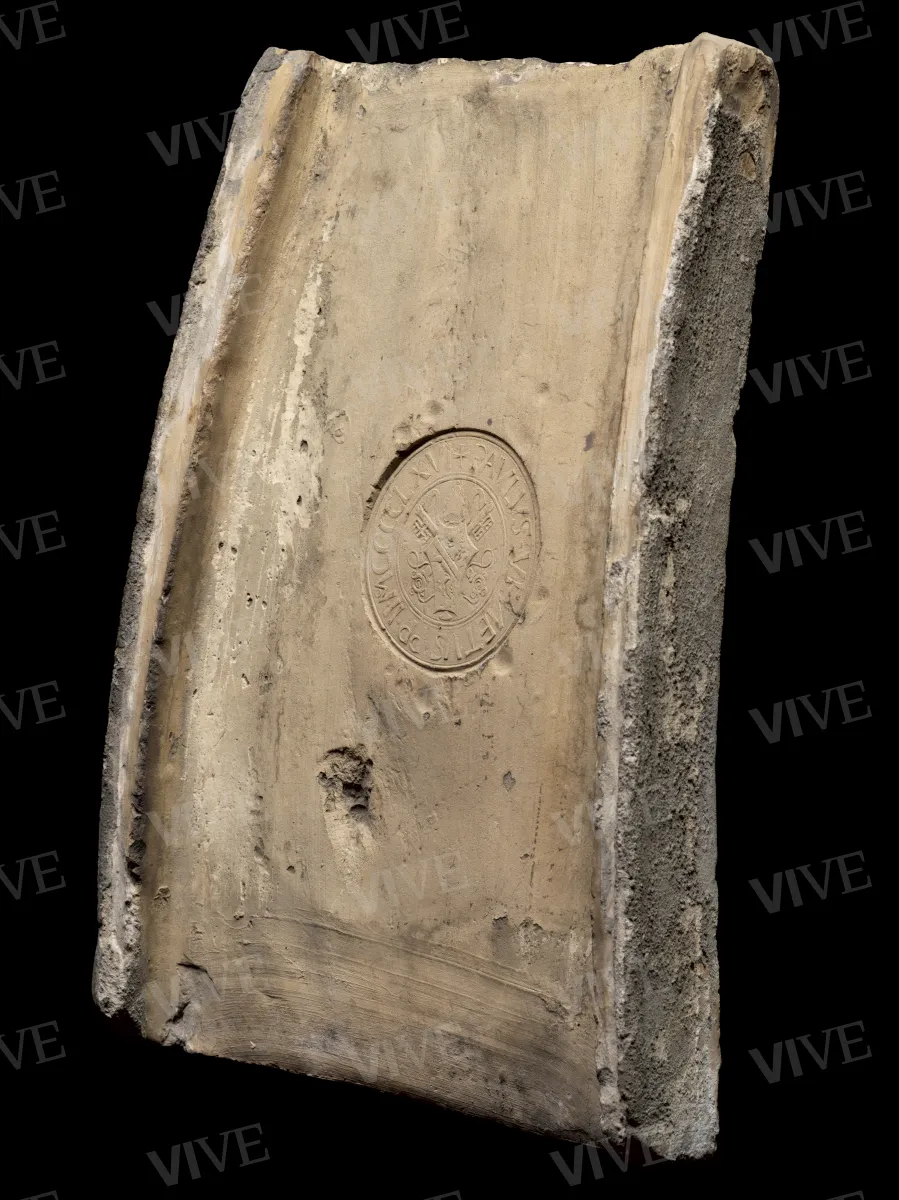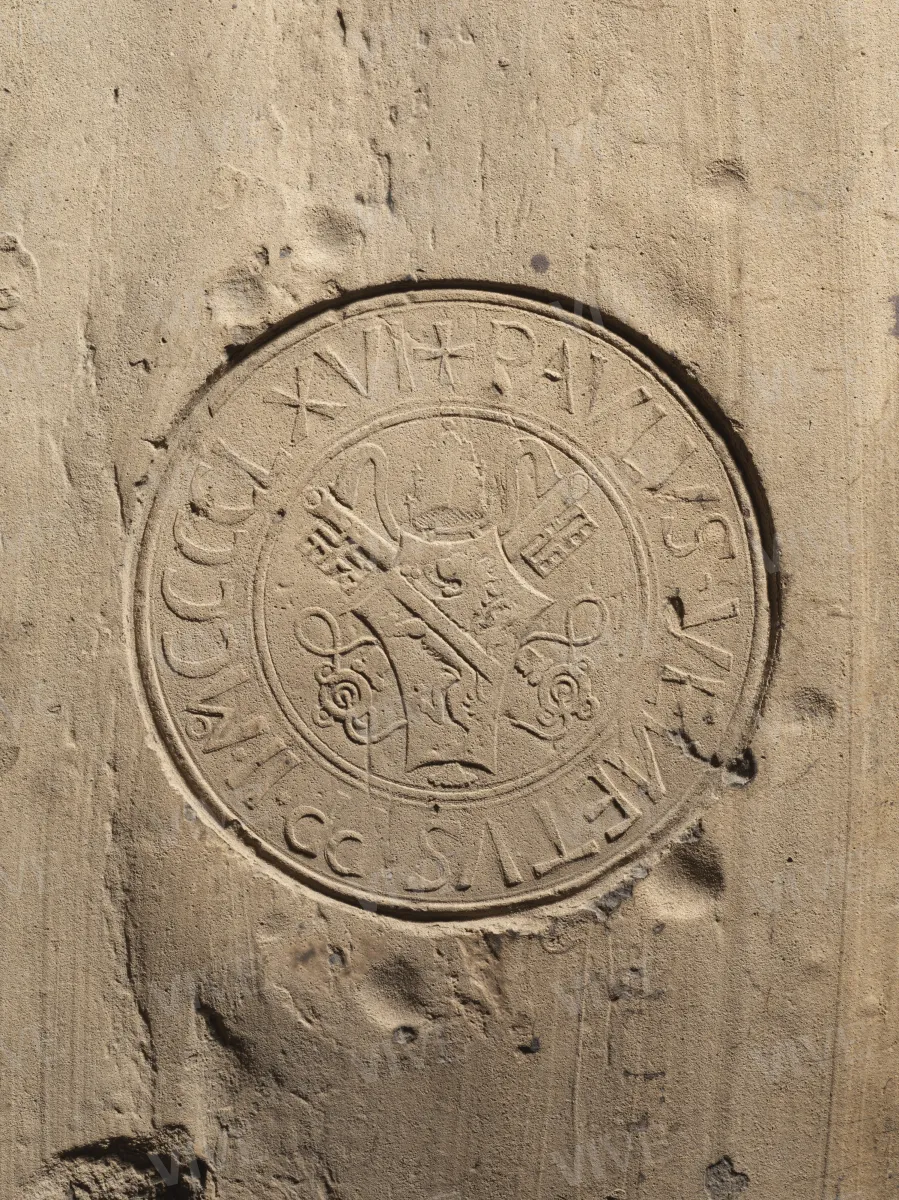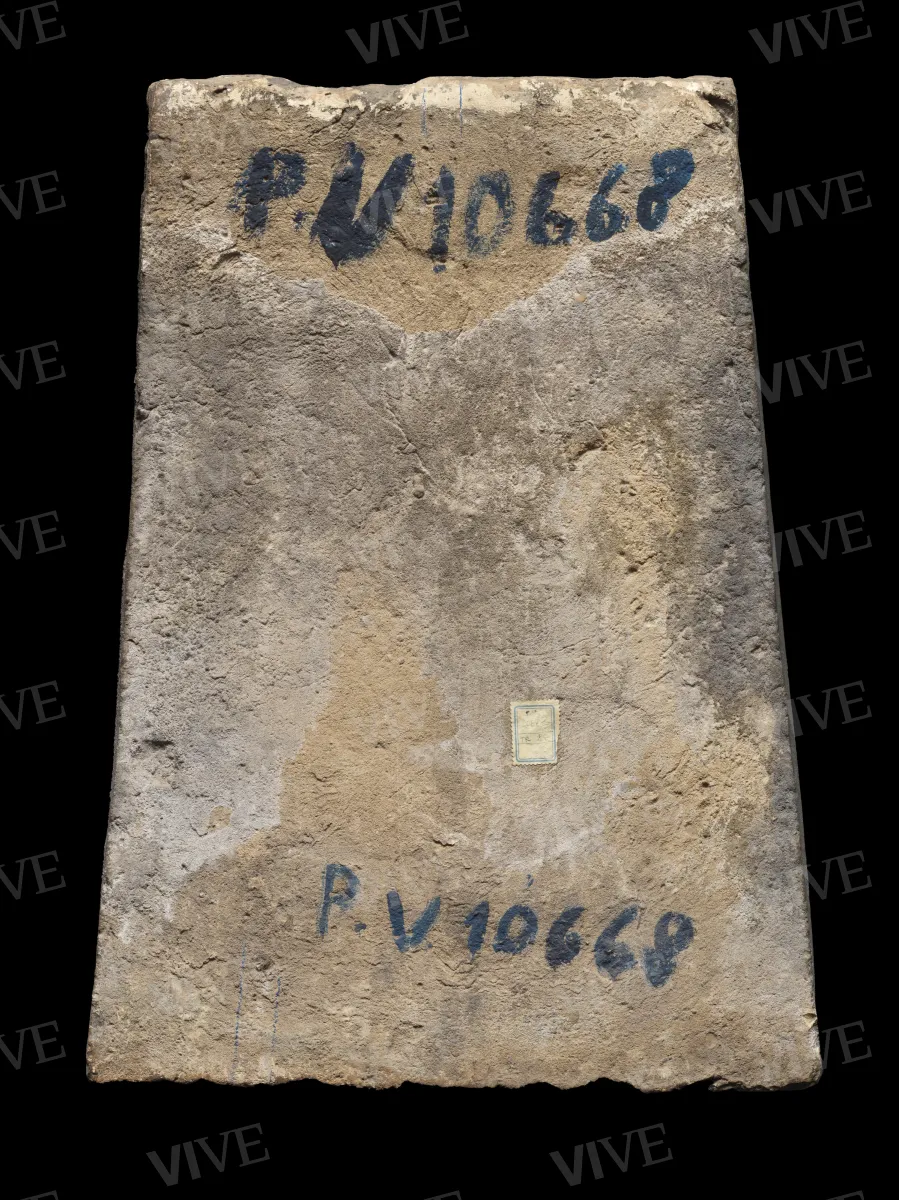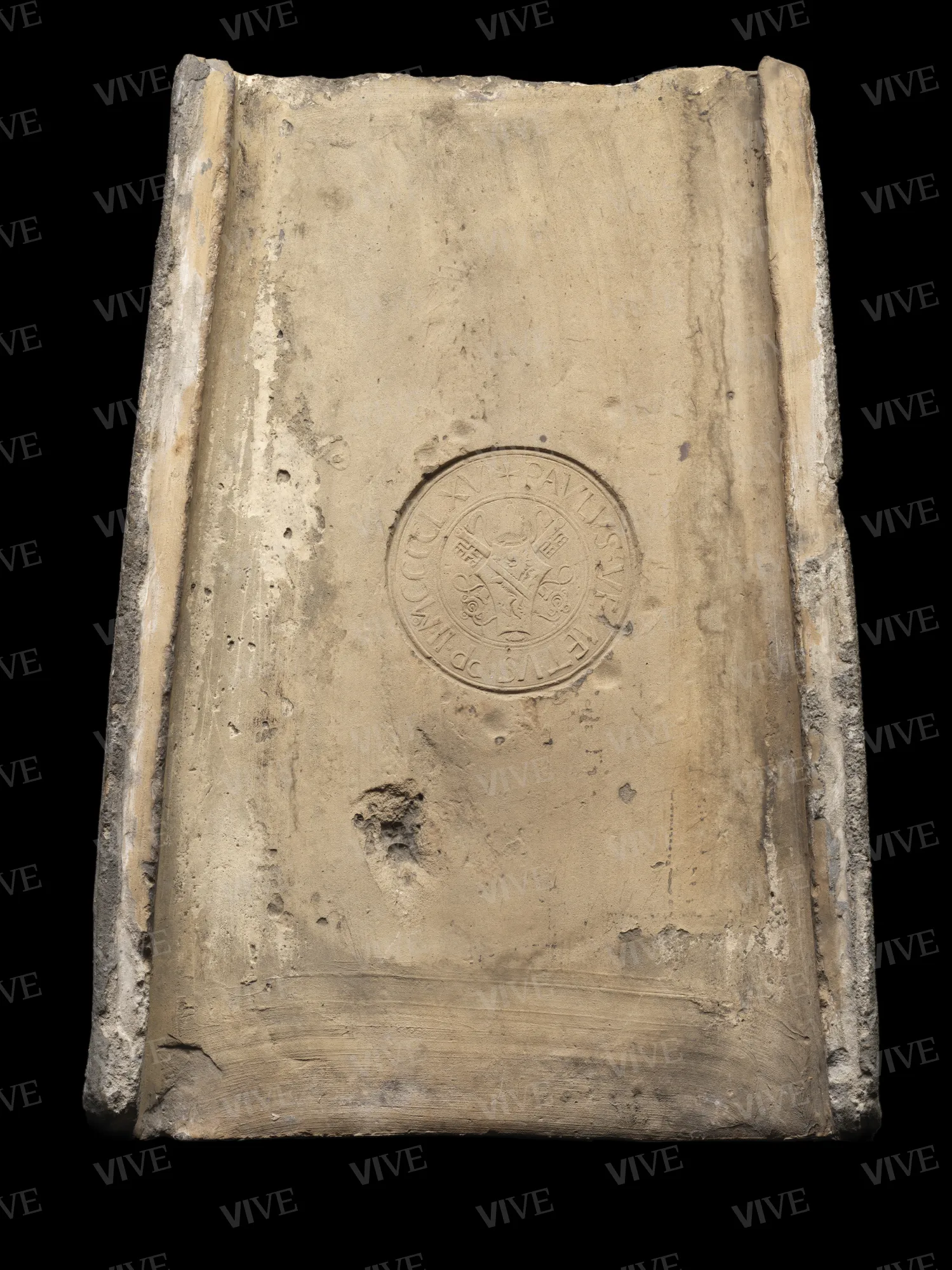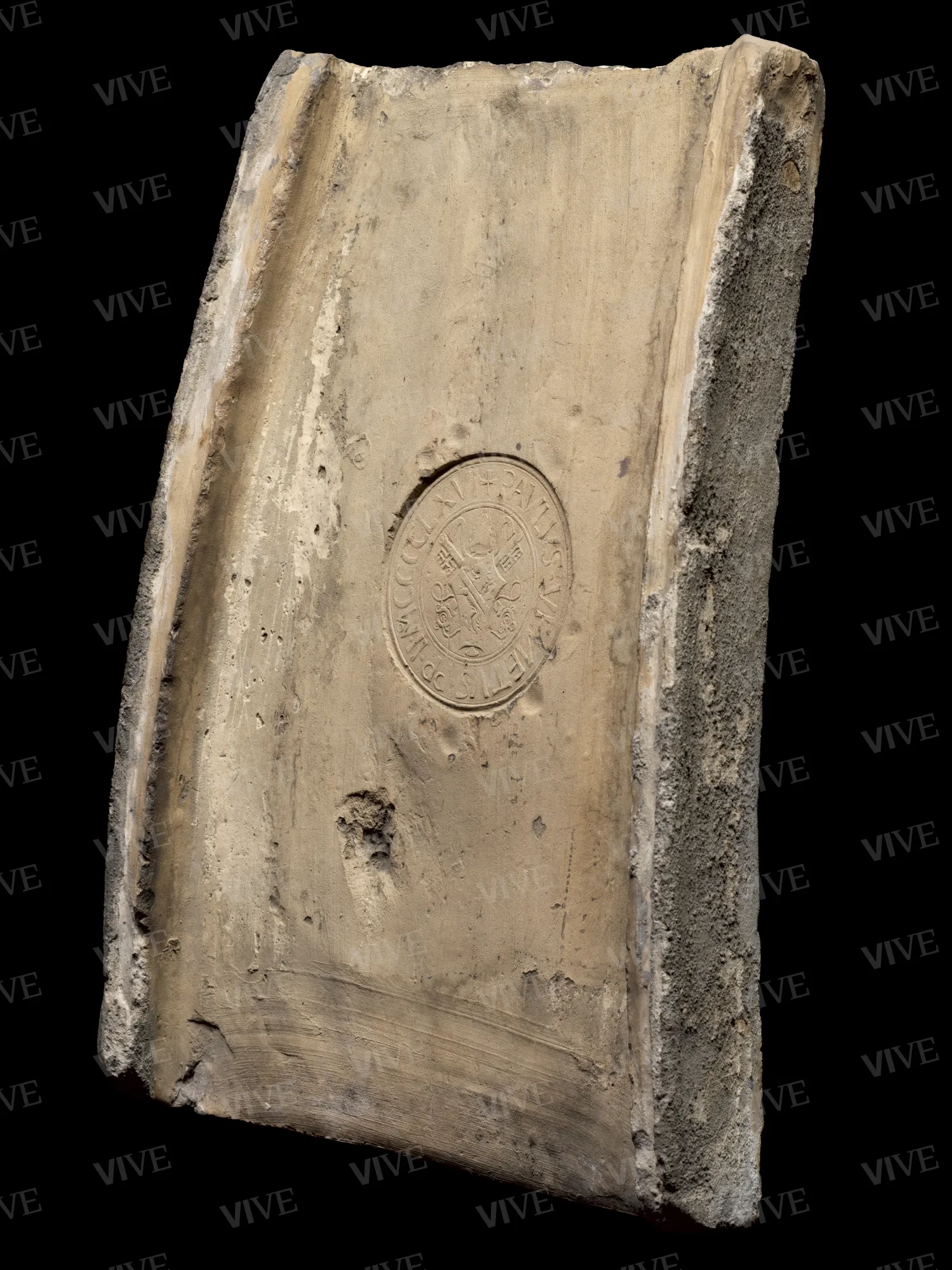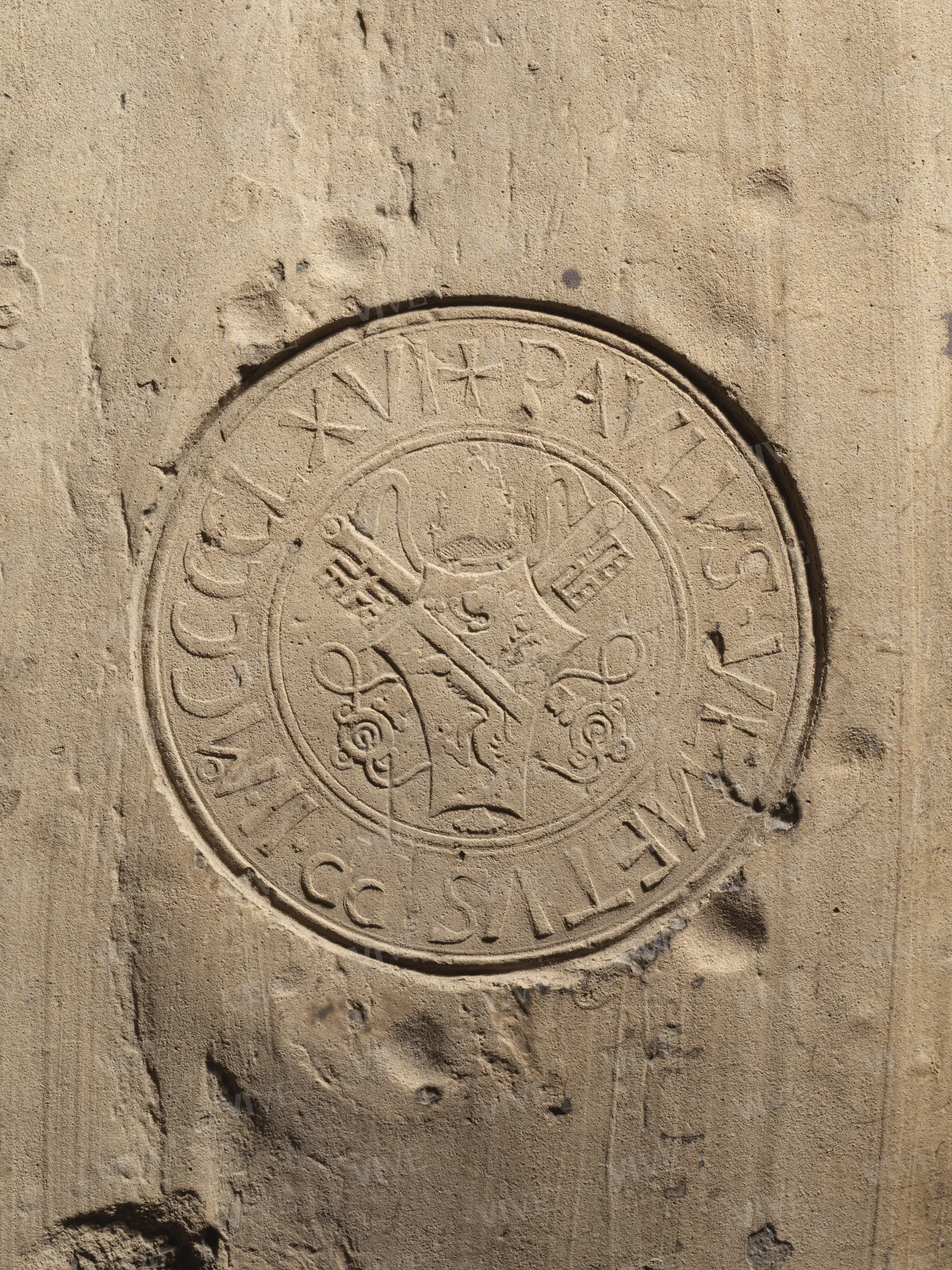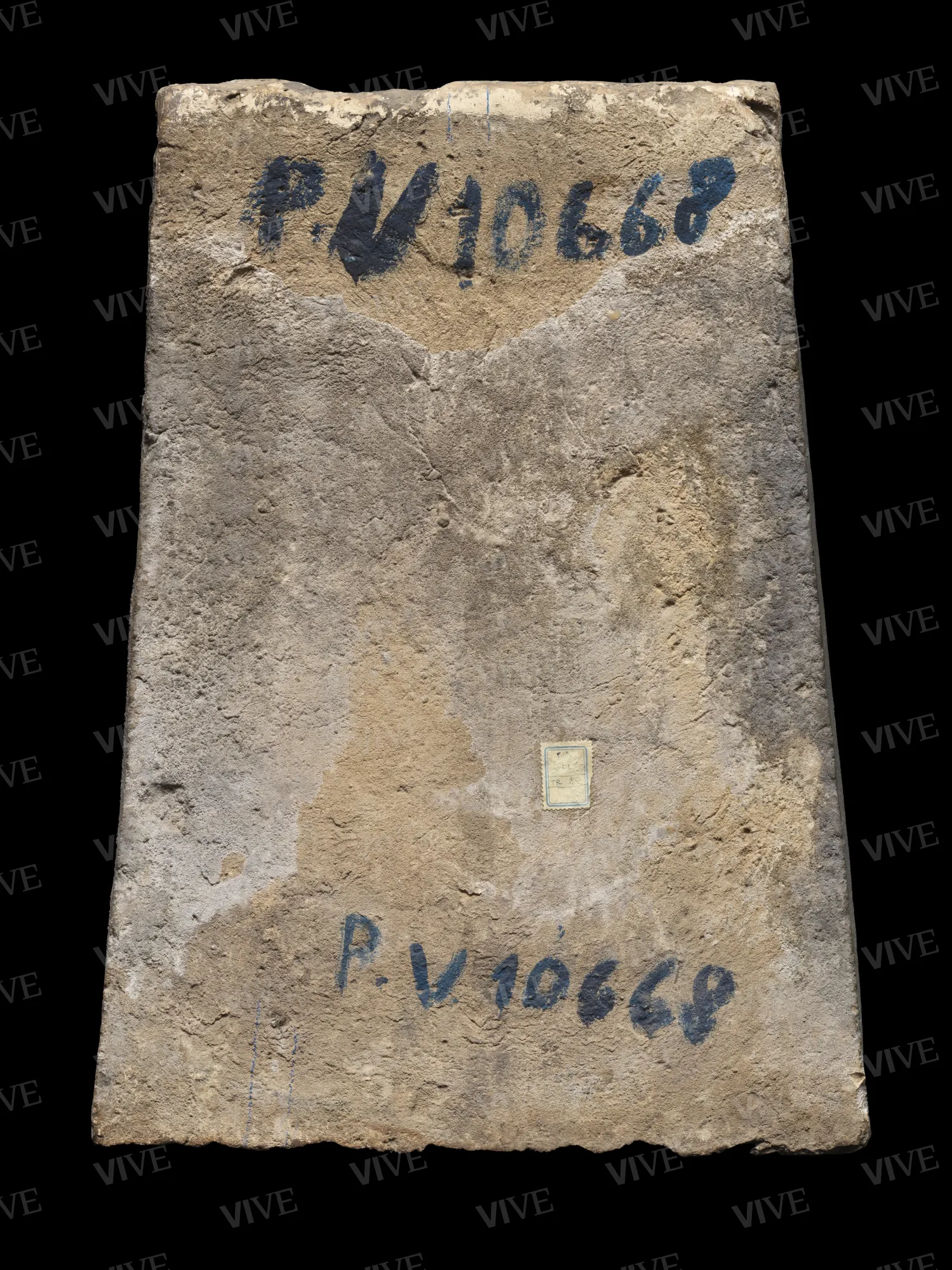Roof tile with the seal of Pope Paul II
Roman production 1466
This trapezoidal terracotta tile, originating from the roof of the Palazzo di San Marco (currently known as Palazzo Venezia), features an impressed seal of Pope Paul II dated 1466. Centrally located is the coat of arms, displaying a lion rampant facing left, surmounted by the papal tiara and accompanied by crossed keys. The artifact exemplifies the patron's meticulous attention to detail during each construction phase of the building, reflecting his desire to imprint his personal insignia on the tile.
This trapezoidal terracotta tile, originating from the roof of the Palazzo di San Marco (currently known as Palazzo Venezia), features an impressed seal of Pope Paul II dated 1466. Centrally located is the coat of arms, displaying a lion rampant facing left, surmounted by the papal tiara and accompanied by crossed keys. The artifact exemplifies the patron's meticulous attention to detail during each construction phase of the building, reflecting his desire to imprint his personal insignia on the tile.
Details of work
Catalog entry
The tile is made of thick trapezoidal terracotta with raised edges and visible work marks from sticks and spatulas. It has discoloration, material residues (possibly lime), chipping on the edges, and a hole in the lower half. In the center, there is an embossed coat of arms of Venetian Pope Paul II: a lion rampant facing left with an oblique band across its chest and a tiara with wings and crossed keys above its head.
From the head of these tiles, which is circular in shape, thin ribbons decoratively occupy the empty spaces within the circular field of the seal. The words encircling the coat of arms reference the pontificate of the Venetian pope and date the impression to 1466, during the final stages of the construction of the Palazzo Venezia (Barberini 2008, pp. 13–20). Another tile of similar dimensions is preserved at the Palazzo Venezia museum. It was discovered during repair work on the roof of the wing of the palazzo facing the square, and bears the same date stamp (Casanova 1980, p. 27, n. 5; Recenti restauri 1963, p. 14). This practice of marking tiles has an illustrious precedent, namely the restoration of the Pantheon initiated by Pope Nicholas V, for whom the pontiff had the newly manufactured lead tiles marked (Tomei 1938, p. 32; Barberini 2008, p. 18).
While the gilded lead tiles that covered the roof of the basilica of San Marco are more well-known (Weiss 1958, pp. 39–40; Cannata 1982, pp. 32–35, nn. 2–3), it is worth considering the workers involved in the production of terracotta artifacts. Analyzing the stamp shapes embossed on the terracotta, particularly the large and clear alphabetic characters with slightly enlarged bars at the ends, suggests that the engraving of the seal matrix can be attributed to a master extensively active for Pope Paul II, specifically Emiliano Orfini from Foligno (Scapecchi 2013; Villani 2020, pp. 192–193). A comparison with the large medal depicting Pope Paul II in consistory, created by Orfini between 1466 and 1467 (inv. 11278), reveals the same letter shapes and the characteristic separation of words marked by a cross-shaped sign (+) at the top, near the tiara. Therefore, it is plausible that the pontiff requested this master seal maker to manufacture an engraved metal matrix for marking the tiles on the palace roof, ensuring his legacy and the installation date of these building elements would be preserved.
Giulia Zaccariotto
State of conservation
Fair.
Inscriptions
Within a double smooth border: “[cross] PAVLVS • VENETVS • P[a]P[a] • II • MCCCCLXVI.”
Provenance
Palazzo Venezia.
Exhibition history
Recenti restauri, acquisti e acquisizioni, mostra per la VI Settimana dei Musei, March 31–April 15, 1963.
References
Tomei Piero, Le vicende del rivestimento della cupola del Pantheon, in «Bollettino d’arte», 3 ser., 32, 1938, pp. 31-39;
Weiss Roberto, Un umanista veneziano. Papa Paolo II, Venezia 1958;
Recenti restauri, acquisti e acquisizioni, catalogo della mostra per la VI Settimana dei Musei (31 marzo-15 aprile 1963), a cura della Soprintendenza alle Gallerie e alle Opere d’Arte Medioevali e Moderna, Roma 1963;
Casanova Maria Letizia, Palazzo Venezia: Paolo II e le fabbriche di San Marco, Roma 1980;
Cannata Pietro (a cura di), Rilievi e placchette dal XV al XVIII secolo, catalogo della mostra (Roma, Museo Nazionale di Palazzo Venezia, febbraio 27 febbraio-29 aprile 1982), Roma 1982;
Barberini Maria Giulia, Il Palazzo di Venezia. La dimora privata del cardinale Pietro Barbo e il palazzo di Paolo II, in Barberini, Maria Giulia (a cura di), Tracce di pietra. La collezione dei marmi di Palazzo Venezia, Roma 2008, pp. 13-54;
Scapecchi Piero, Emiliano Orfini, ad vocem, in Dizionario Biografico degli Italiani, LXXIX, Roma 2013;
Villani Rosa Maria, La medaglia di Paolo II in concistoro: ipotesi di tecnica esecutiva, in Simonato Lucia (a cura di), La collezione di medaglie Mario Scaglia. Esercizi di lettura, Cinisello Balsamo 2020, pp. 192-193, n. 2.

